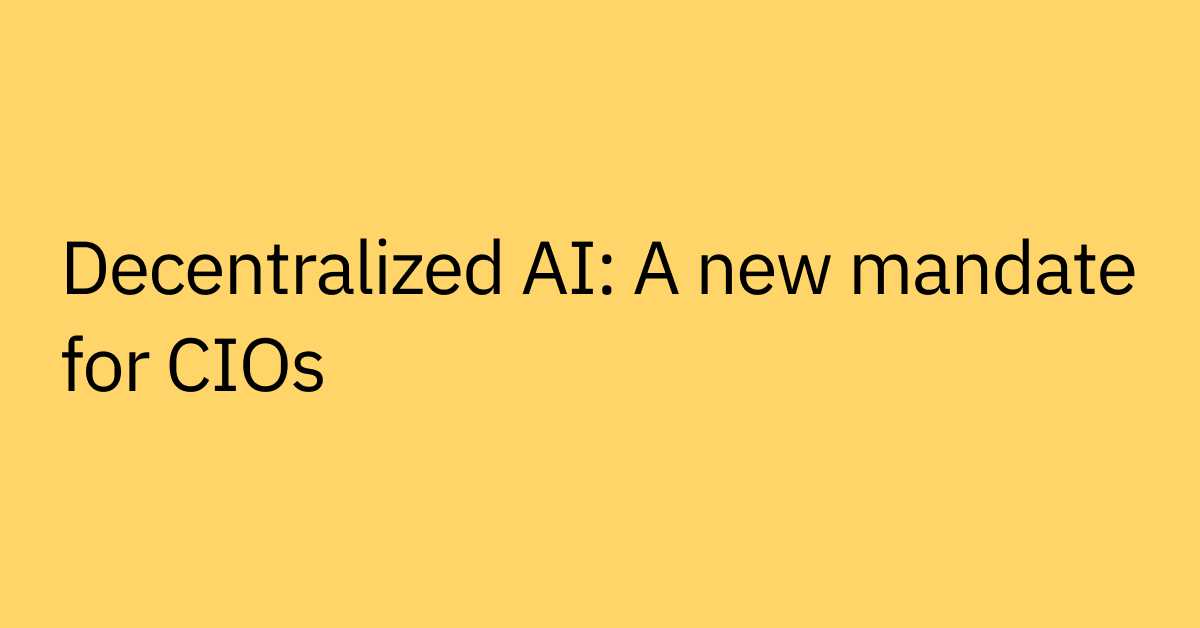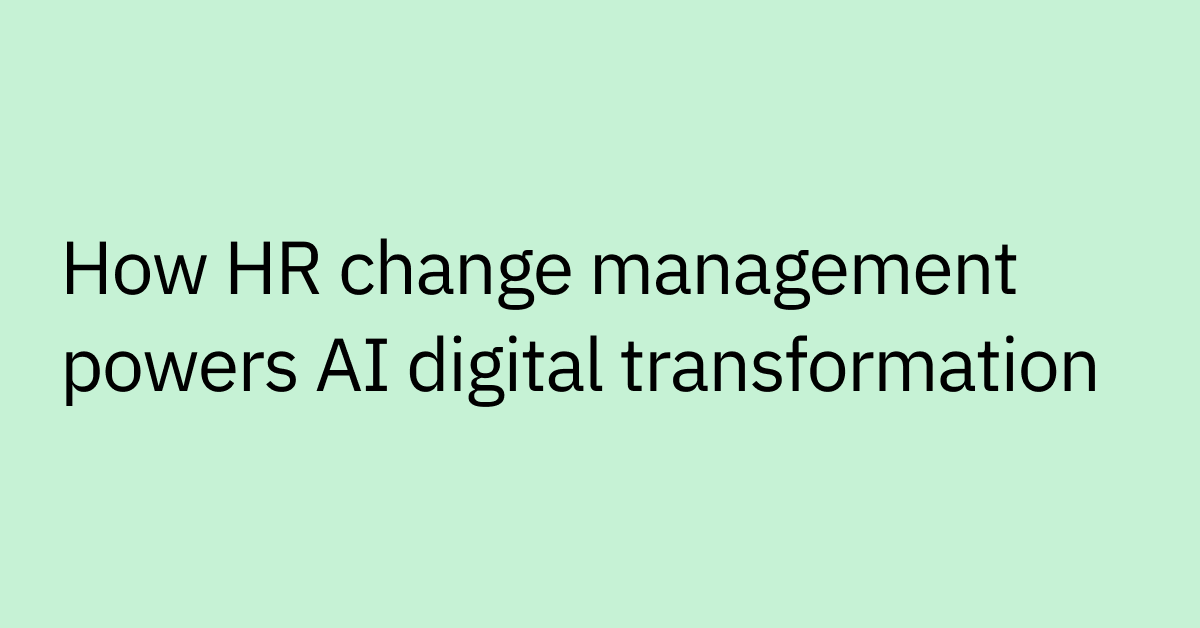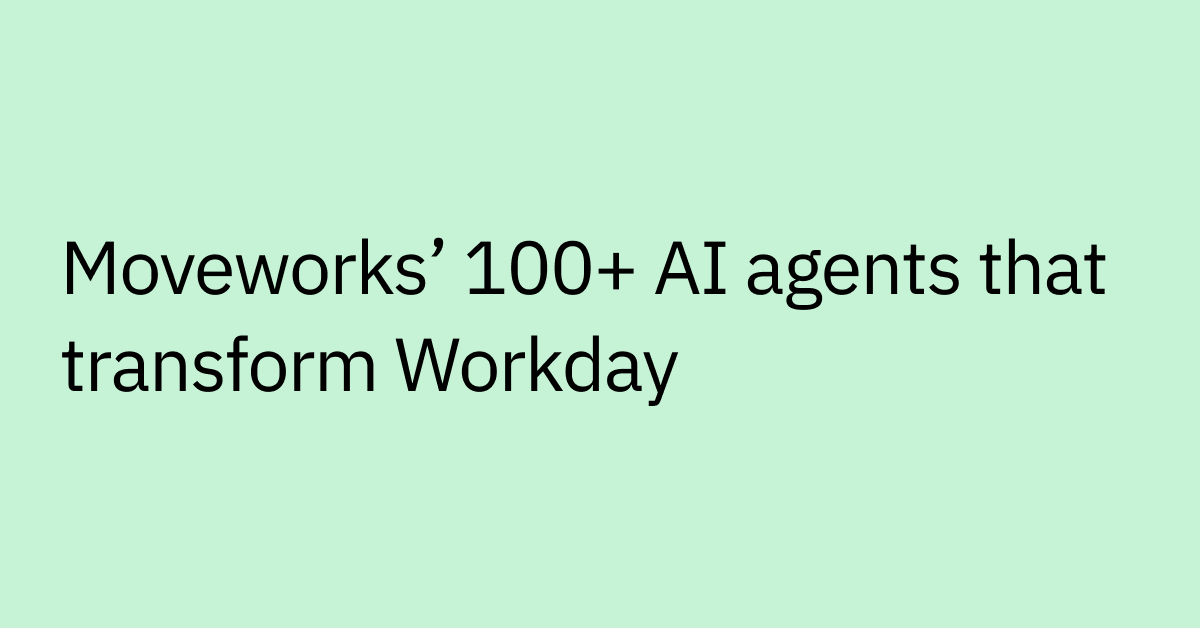Table of contents
Highlights
- Omnichannel support unifies every employee touchpoint—chat, email, and portals—into one consistent, context-aware experience.
- Unlike multichannel setups, true omnichannel systems maintain continuity across tools, reducing duplicate tickets and repetitive handoffs.
- AI-powered assistants preserve conversation context, automate common requests, and personalize help based on role and language.
- Continuous, multilingual support enables global teams to access reliable, around-the-clock help with minimal friction or delays.
- Moveworks delivers omnichannel support that connects every system, automates workflows, and enables employees get fast, consistent help wherever they work.
When employees encounter delays and inconsistencies in support, it can impact productivity and morale. For instance, an employee might submit a PTO request through a portal and receive no immediate response, prompting them to follow up via email and get an "out of office" autoreply.
They then use the company’s self-service portal to submit the same request a third time. Although there are multiple channels available, the lack of a unified experience can complicate the process.
The key issue is not the number of channels, but the absence of context continuity between them, which may result in duplicate tickets and delayed responses.
This can lead employees to spend more time on resolving issues than on their actual tasks. As hybrid and always-on work environments become more prevalent, the traditional methods for handling requests might struggle to meet new demands.
By adopting omnichannel support, organizations can deliver fast and consistent experiences. This approach integrates systems and tools to offer personalized assistance, regardless of where employees seek help, effectively bridging fragmented conversations.
What is omnichannel employee support?
Omnichannel employee support provides employees with consistent, seamless support across multiple communication channels, like:
- Enterprise help desk chatbots
- Web browser
- Microsoft Teams
- Slack
- Intranet
- Social media platforms
- Support portals
The goal is to ensure employees can get help wherever they are, using the platform they prefer, while maintaining continuity and a unified experience — even if they bounce between different channels.
Let’s revisit the PTO request example above. While there were multiple channels for the employee to reach out to for support, the experience was clunky and inefficient. That’s an example of multichannel support — where help is technically available in multiple places, but not connected.
- Omnichannel support goes a step further, linking support touchpoints so employees can use their preferred tool and still get the same fast, accurate, and personalized help.
- AI-powered solutions can help unify these experiences by connecting the systems your employees already use (like web browser, Slack, email, your ticketing platform) into a single interface so support feels seamless, unified, and efficient.
- True omnichannel support also requires a unified backend — where AI links related conversations, understands context, and integrates with business systems like ITSM and HRIS.
For example, an employee could ask for PTO in AI assistant, then follow up by email. An AI-powered omnichannel system can recognize related issues and maintain context across platforms, linking conversations and routing everything through a unified backend.
That means employees don’t have to repeat themselves, and support teams don’t waste time sorting through duplicate tickets.
Why continuity across channels is key to employee satisfaction
In a hybrid, always-on workplace, employees reach out for help through whatever tool is in front of them. And they expect the experience to work like everything else in their digital lives: fast, personalized, and consistent.
When those conversations don’t carry over between tools — or the responses vary depending on the channel — support starts to feel clunky and frustrating, falling short of modern employee expectations.
Continuity ensures that handoffs between tools, channels, and teams are invisible to the employee — creating a single, cohesive support journey from start to finish.
For example, if an employee starts a request in a portal and follows up via email, but the system treats it as a new issue, they’re forced to repeat themselves — slowing resolution and eroding trust.
Continuity doesn’t just benefit employees — it gives IT and HR teams the full context they need to resolve issues quickly, reduce redundant tickets, and maintain consistent service.
It also enables better measurement and insights — helping teams track what’s working, identify friction points, and improve support over time.
Discover how to clearly measure, quantify, and elevate your employee experience with insights.
Enabling seamless information sharing, avoiding duplication
When employees can’t find answers quickly, they often try different channels at once, hoping for a faster response. This creates a lot of digital noise: duplicate tickets, fragmented conversations, and extra follow-up.
By using AI-driven capabilities like conversation history and intent detection, omnichannel support platforms can recognize repeated questions and group them into one unified, continuous support experience — even across different tools.
Instead of treating each message like a new issue, the system connects the dots behind the scenes — understanding employee intent and linking related requests for faster, more accurate resolution.
Even better, these tools can integrate with your business systems, like customer relationship management (CRM), ITSM, and self-service HR systems, to personalize responses based on role, location, or department.
This helps ensure employees get the right help the first time — no matter where they reach out.
Support teams also benefit — with fewer duplicate tickets to manage, reduced manual triage, and better visibility into support volume and trends.
24/7 availability and asynchronous support
Employees may not always complete a support interaction in one sitting — or even in the same channel.
They may start a support conversation in Slack, then follow up hours or even days later via email or the service portal. Without continuity between those touchpoints, context gets lost and the support experience breaks down.
With omnichannel support, AI preserves context across tools and time. Whether someone returns to the request hours or days later, the system remembers where they left off, whether it’s in a web browser, messaging app, email, or your intranet portal.
That continuity ensures consistent, informed responses without delays or confusion.
This also enables global teams to get help across time zones — without waiting for business hours.
And when employees receive faster, more consistent support, it shows up in the metrics that matter, including:
- Improved employee experience
- Reduced resolution times
- Greater support efficiency
- Higher self-service rates
- Fewer reopened tickets
- Better visibility into support trends
Providing global, multi-lingual support
If you’ve got a global team, language shouldn’t be a barrier to getting help. But many support systems still default to one language, putting non-native speakers at a disadvantage — or forcing them to rely on coworkers to translate.
Modern AI-powered omnichannel platforms change that. Advanced platforms can translate messages and interpret messages across messaging platforms, web browsers, email, and other channels, and are designed to understand context, intent, and nuance in multiple languages.
This empowers every employee to get clear, relevant support in the language they’re most comfortable with. This kind of inclusive, intelligent support helps build trust, reduce misunderstandings, and give global teams the resources they need to stay productive — wherever they are, and in whatever language they speak.
Going from query to resolution in any channel
In traditional support systems, resolving even simple tasks can feel like a scavenger hunt: being bounced to multiple resources, searching through outdated folders or files, and pinging support teams multiple times along the way.
Omnichannel support simplifies this process.
With the right platform, employees can complete entire workflows like software approvals, access requests, or PTO submissions without switching tools or starting over. The AI understands the context, handles the handoff, and keeps everything on track.
That might look like a platform that is able to:
- Intercept, understand, and resolve issues submitted across channels, like chat, email, forms, and portal
- Automatically classify, categorize, and assign tickets to the correct group using machine learning
- Multilingual support is built-in, enabling dynamic understanding and response in multiple languages
Because the backend is unified and artificial intelligence helps handle the transitions, an AI omnichannel platform can become a one-stop shop for support.
How alternatives to omnichannel platforms can fall short
For teams looking to streamline support, multichannel systems may seem like a practical starting point. They let employees reach out via email, chat, or portals — which seems flexible enough on the surface.
But here’s the thing: Being available in lots of places isn’t the same as providing a great, consistent experience.
Unlike omnichannel systems that tie everything together, multichannel setups primarily focus on giving employees options for support – and often treat each conversation as a separate interaction. That can lead to fragmented journeys, repeated questions, and more work for everyone.
Enterprises relying on multichannel support setups commonly run into issues like:
- Duplicate tickets when employees use different channels in parallel
- Inconsistent responses depending on the channel used
- Lack of continuity, forcing users to repeat themselves
- Limited visibility into overall metrics, making it hard to identify patterns and improve
- Tool sprawl that increases complexity and adds to the help desk load
Some companies try to solve these challenges by outsourcing to managed service providers (MSPs). MSPs can offer support breadth and expertise, but they may lack the deep system integrations and real-time context needed to deliver contextual, personalized help across tools.
To break it down:
- Omnichannel tools connect every conversation and system, enabling one continuous employee experience across Slack, email, portals, and beyond.
- Multichannel tools offer various channels, but keep each one isolated — leading to friction and inefficiency.
- MSPs provide broader IT support services, which can include help desk outsourcing, but don’t inherently solve for connected or context-aware support.
Feature | Omnichannel Support Tools | Multichannel Support Tools | Managed Service Provider (MSP) |
Focus | Providing a unified and seamless employee experience across all channels. | Offering employees multiple, separate channels for support. | Providing proactive IT management and support services, potentially including employee support. |
Channel integration | All channels are seamlessly integrated, allowing employee context and history to be shared across platforms. | Channels typically operate independently and may not share employee data. | May offer integration between tools, but channels are often managed separately unless explicitly configured. |
Employee experience | Highly consistent and personalized experience, allowing employees to easily switch channels without losing context. | Can be disjointed, as employees may need to repeat information when switching channels. | Can enhance employee service if systems are integrated, but omnichannel continuity is not guaranteed. |
Data management | Centralized employee data from all touchpoints, enabling comprehensive insights and informed decisions. | Employee data is often siloed within individual channels, making it difficult to get a holistic view. | May offer centralized data management within managed services, depending on implementation. |
Service delivery model | Typically involves investing in and integrating dedicated software to achieve a unified experience. | Can be easier and more affordable to implement initially, focusing on building out individual channels. | Offers a subscription-based model for IT support, which may reduce internal workload but adds vendor reliance. |
Proactivity vs. reactivity | Focuses on proactively addressing employee needs and personalizing interactions based on insights. | Primarily addresses issues as they arise within each channel. | Generally offers a proactive approach, monitoring systems, and preventing issues before they occur. |
How AI powers omnichannel support
AI connects the dots behind the scenes so employees get accurate, personalized help instantly, wherever they are. Here’s how:
Conversational AI across channels: AI-powered assistants engage employees on chat, web-browser, messaging app, email, and more, delivering consistent support in every channel.
Personalization and context awareness: AI tailors responses based on role, location, and past interactions to deliver relevant, personalized responses.
Task automation: AI can autonomously resolve routine issues such as password resets or access requests, reducing the burden on support staff and speeding up resolution times for employees.
Persistent, unified interactions: AI enables employees to start a support request in one channel and continue it in another without losing context, ensuring a unified and seamless experience.
Multilingual and 24/7 support: Around-the-clock help in multiple languages helps global teams stay productive and provides a consistent experience across time zones and languages.
Integration with business systems: AI works within your existing ITSM program, HRIS, knowledge bases, and entire tech stack. This lets employees search, take action, and solve issues right where they are. These AI systems are designed to operate within existing security and permissions frameworks, enabling compliance with enterprise access policies.
In many cases, a helpdesk ticketing system uses AI to automate support, turning fragmented conversations into one connected journey. This turns fragmented conversations into one connected journey.
Omnichannel support use cases across the employee lifecycle
Omnichannel support isn’t just for IT tickets or HR requests: It can play a critical role in fostering employee satisfaction and a better employee experience from the moment someone joins your team. Here’s how it can boost internal operations throughout the entire employee journey from day one.
Onboarding: Getting help from day one
New hires often arrive with questions about enrolling in benefits, accessing systems, or learning workplace policies. Without the right support, that confusion slows them down.
Omnichannel support ensures they get instant help through browser, Slack, email, or a portal, even before day one (if early access is granted). Automated onboarding tasks mean fewer bottlenecks and less strain on HR teams during peak hiring periods.
Everyday IT and HR tasks: Fast support, fewer delays
Routine Tier 0–1 requests like password resets, checking PTO balances, or accessing software shouldn’t clog up your support team.
With AI-powered, automated omnichannel support, such tasks get handled instantly, across any channel, without requiring human intervention.
This reduces wait times, cuts help desk load, and improves resolution speed without adding headcount. With self-service automation, employees get the same fast experience in Microsoft Teams, email, Slack, or wherever they prefer to work.
Remote and hybrid work: Supporting distributed teams equitably
For distributed teams, support quality shouldn’t depend on time zone, language, or communication channel. When your omnichannel support systems leverage AI-driven platforms with multilingual capabilities and 24/7 availability, employees never have to wait for help to come online.
Everyone has the same access to support, creating a more equitable workplace experience.
Employee communications: Keeping employees informed and empowered
During company-wide changes like mergers, tech stack updates, reorgs, or new policy rollouts, clear, consistent internal communication is critical. But even the most well-organized announcement emails or all-hands meetings can leave employees with questions.
Omnichannel support gives employees the flexibility to ask follow-up questions in whatever tool they prefer. The system retains full context across channels, so no one has to repeat themselves or submit multiple tickets to get answers.
Responses pull directly from your knowledge base, reducing confusion and helping teams stay aligned.
Advanced AI capabilities can also surface relevant information (like FAQs or training guides) before employees even need to ask, making internal communications feel more proactive and less reactive.
Create better employee support without adding complexity
Delivering a seamless employee experience doesn’t mean adding more tools — it means connecting the ones you already have.
Without continuity, multiple support channels only add noise: duplicate tickets, longer wait times, and fragmented help.
An omnichannel approach is key, but the right AI-powered platform is what will make your support strategy scalable and effective.
Moveworks AI Assistant Platform integrates with your existing systems to simplify support for every employee:
- Consistent omnichannel employee experience: Moveworks delivers a consistent support experience across all channels—chat, browser, email, and forms—so employees receive the same level of service regardless of where they engage.
- Automated ticket handling and resolution: AI Assistant can automatically classify, categorize, and assign tickets to the correct group using machine learning. It can intercept, understand, and resolve issues submitted through any channel, including chat, email, forms, and portals.
- Tailored global support: Multilingual support is built-in, enabling dynamic understanding and response in multiple languages. Also, the platform is built to be extensible, supporting you to quickly build and deply bespoke AI agents and workflows tailored to organizational needs
Moveworks provides omnichannel support by allowing employees to engage with its AI Assistant across multiple platforms and channels, ensuring a consistent and seamless support experience.
Learn how Moveworks’ enterprise AI assistant can help you deliver better support at scale.



